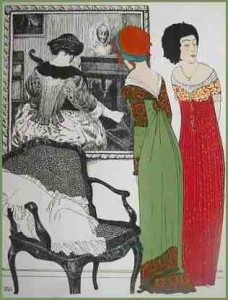Over the last few months, I’ve focused my research reading a little more onto the late Victorian and Edwardian periods in English history.

First, I highly recommend King Leopold’s Ghost: A Story of Greed, Terror, and Heroism in Colonial Africa by Adam Hochschild; it’s gripping from end to end, as well as informative about events often overlooked or skimmed over by historians, not only the atrocities that were perpetrated in the Congo, but the worldwide efforts to protest and prevent those atrocities, and how all these events fit into a historical context.
Inside the Victorian Home: A Portrait of Domestic Life in Victorian England by Judith Flanders was a treasure – it gave me a lot of nitty gritty details about households and how people managed their everyday life, from indoor plumbing to dealing with coal heat. It was an overview of several decades, so if I choose to focus on a specific period, I’ll need to do additional research; but thanks to this book, I’ll know where to look. It was a smooth, easy read as well, with a number of useful illustrations.
Though intriguing, Impossible Purities: Blackness, Femininity, and Victorian Culture by Jennifer DeVere Brody was less useful for my purpose than I had hoped; it was a theoretical book. However, it gave me a lot to think about, and some additional references; this is the sort of book that often turns out to influence the themes of my writing, and helps me put the other material I’ve been reading into a context.

London 1900: The Imperial Metropolis by Jonathan Schneer, while also theory-based, still provides interesting detail about life in London around the turn of the century; I expect to get a lot of use out of the notes and bibliography.
The Perfect Summer: England 1911, Just Before the Storm by Juliet Nicolson is rich with detail, mostly about the upper classes in England during that period, interspersed with brief accounts of the class turmoil happening at the same time. My only complaint was that sometimes the author seemed a little coy, for instance referring to Virginia Stephen repeatedly without noting that, eventually, she became Virginia Woolf. A reader who didn’t know her maiden name might have been unable to make useful connections. The book made a great companion read to Uncommon Arrangements: Seven Portraits of Married Life in London Literary Circles 1910-1939 by Katie Roiphe, as a number of the same people appear in both books. I’m looking forward to Nicolson’s second book, The Great Silence: Britain from the Shadow of the First World War to the Dawn of the Jazz Age.
I’ve also been sporadically working through a couple of reference works: Victorian and Edwardian Fashion: A Photographic Survey by Alison Gernsheim and Victorian Babylon: People, Streets and Images in Nineteenth-Century London by Lynda Nead.
Suggestions are welcome!
